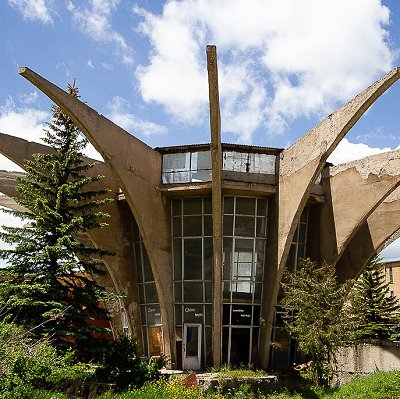
Like us on Facebook
PLACE NAMES



|
| Hrazdan |
 |
|
Hrazdan is a town and urban municipal community in Armenia serving as the administrative centre of Kotayk Province, located 45 kilometres (28 miles) northeast of the capital Yerevan. As of the 2011 census, the population of the town is 41,875. It has lost a significant number of inhabitants since the 1989 census reported 59,000 people.
During the Soviet period, Hrazdan was one of the highly industrialized centres of the Armenian SSR.
The prelacy of the Diocese of Kotayk of the Armenian Apostolic Church is headquartered in Hrazdan.
The town is named after the Hrazdan River which flows through the town from north to south. The name Hrazdan itself is derived from the Middle-Persian name Frazdan which is related to the Zoroastrian mythology. Frazdan is the name of the lake mentioned in the Avesta while referring to Goshtasb's war with two of its enemies. Armenians were predominantly Zoroastrian before embracing Christianity, and Zoroastrian names were maintained in the geography of Armenia.
Historically, the territory of Hrazdan is associated with the historic Kotayk canton of Ayrarat province of Ancient Armenia. According to Ptolemy, Kotayk was directly ruled by the Arsacid kings of Armenia during the 1st and 2nd centuries AD. Later between the 5th and 7th centuries, the region was granted to the Kamsarakan and Amatuni families, under the Persian rule. Between the 7th and 9th centuries, Armenia suffered from the Arab Islamic occupation.
By the end of the 9th century, the region became part of the newly established Bagratid Kingdom of Armenia. Between the 11th and 15th centuries, the region suffered from the Seljuk, Mongol, Ag Qoyunlu and Kara Koyunlu invasions, respectively.
At the beginning of the 16th century, the territory became part of the Erivan Beglarbegi within the Safavid Persia. During the first half of the 18th century, the territory became part of the Erivan Khanate under the rule of the Afsharid dynasty and later under the Qajar dynasty of Persia. It remained under the Persian rule until 1827-1828, when Eastern Armenia was ceded to the Russian Empire as a result of the Russo-Persian War of 1826–28 and the signing of the Treaty of Turkmenchay.
With the fall of the Russian Empire and as a result of the decisive Armenian victory over the Turks in the battles of Sardarabad, Abaran, and Gharakilisa, the region became part of the independent Armenia in May 1918. After 2 years of brief independence, Armenia became part of the Soviet Union in December 1920.
Hrazdan is among the towns that were founded and developed during the Soviet rule. The former village of Akhta (or Nerkin Akhta) -covering the southern parts of present-day Hrazdan- was the centre of the Akhta raion; an administrative territory of the Armenian SSR formed in 1930. In 1959, The village of Akhta was incorporated into an urban-type settlement known as Hrazdan. Akta raion was also renamed as Hrazdan raion.
The original urban development plan of Hrazdan was introduced in 1961-63 by architects M. Grigoryan and E. Altunyan. Upon the January 12, 1963 decision of the Supreme Soviet of the Armenian SSR on the territorial changes in the state, the villages of Vanatur, Jrarat, Kakavadzor and Makravan have been merged within Hrazdan to become a town of republican subordination. In fact, the town of Hrazdan was formed through the merger of a group of separate villages and settlements.
Hrazdan has gone through major development during the 1960s and 1970s when many large industrial plants were opened by the Soviet government, including the "HrazdanMash" machine tool plant, cement factory, Jrarat milk factory and the prefabricated concrete panels plant. Another urban development plan was introduced in 1978-80, where it was envisaged to accommodate 120,000 residents in Hrazdan by the end of 2010. However, the plan was eventually abandoned with the dissolution of the Soviet Union.
|
 Feel free to Email me any additions or corrections Feel free to Email me any additions or corrections
LINKS AVAILABLE TO YOUR SITE
| |





